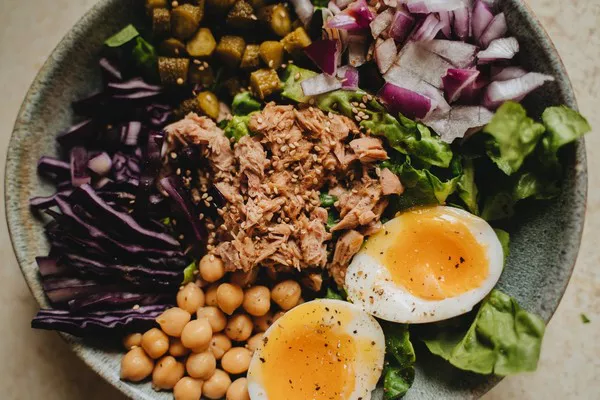When it comes to weight loss, one of the most common questions people ask is, “What is the best 1000-calorie diet?” The truth is, there isn’t a one-size-fits-all answer. However, there are some key principles and strategies you can follow to create a healthy, balanced, and effective 1000-calorie diet plan.
Understanding Calorie Deficit
First, let’s talk about calorie deficit. Weight loss occurs when you consume fewer calories than you burn. By creating a calorie deficit, your body uses stored energy (fat) to meet its energy needs. A 1000-calorie diet aims to create such a deficit, but it’s crucial to do so in a healthy and sustainable way.
Importance of a Balanced Diet
When planning a 1000-calorie diet, it’s essential to ensure that your meals are balanced and provide all the necessary nutrients. This means incorporating a variety of food groups, including:
Vegetables and Fruits: Rich in vitamins, minerals, fiber, and antioxidants.
Whole Grains: Provide essential nutrients and fiber, aiding in digestion and keeping you feeling full longer.
Protein Sources: Lean meats, poultry, fish, beans, nuts, and seeds are great sources of protein, which helps maintain muscle mass during weight loss.
Healthy Fats: Olive oil, avocados, nuts, and seeds contain monounsaturated and polyunsaturated fats, which are beneficial for heart health.
Popular Diet Plans
While there are many different diet plans to choose from, some popular options for a 1000-calorie diet include:
DASH Diet: Ranked as one of the best diets by U.S. News and World Report, the DASH (Dietary Approaches to Stop Hypertension) diet focuses on reducing sodium intake, eating plenty of fruits, vegetables, whole grains, and lean proteins, and limiting saturated and trans fats. It’s a flexible and balanced eating plan that promotes heart health.
Low-Carb/Ketogenic Diet: This diet emphasizes a high intake of fats, moderate protein, and very low carbohydrates. By restricting carbs, the body switches to burning fat for energy, leading to weight loss. However, it’s important to monitor nutrient intake carefully to ensure you’re getting enough vitamins, minerals, and fiber.
Intermittent Fasting: Intermittent fasting involves cycling between periods of eating and fasting. For example, you might fast for 16 hours and eat within an 8-hour window. This can help create a calorie deficit and promote weight loss. However, it’s essential to focus on nutrient-dense foods during your eating window to ensure you’re getting all the necessary nutrients.
Sample 1000-Calorie Diet Plan
Here’s a sample 1000-calorie diet plan to give you an idea of what a balanced, nutritious diet might look like:
Breakfast
- 1 small banana (about 90 calories)
- 1 boiled egg (about 78 calories)
- 1/2 cup of oatmeal cooked in water (about 150 calories)
- Total: 318 calories
Snack
- 1 small apple (about 52 calories)
- 10 almonds (about 70 calories)
- Total: 122 calories
Lunch
- 3 ounces of grilled chicken breast (about 165 calories)
- 1 cup of mixed greens with vinaigrette dressing (about 50 calories)
- 1/2 cup of cooked brown rice (about 108 calories)
- Total: 323 calories
Snack
- 1 small carrot (about 25 calories)
- 2 tablespoons of hummus (about 60 calories)
- Total: 85 calories
Dinner
- 3 ounces of baked salmon (about 150 calories)
- 1 cup of steamed broccoli (about 40 calories)
- 1/2 cup of quinoa (about 114 calories)
- Total: 304 calories
- Total Calories: 1152 calories (slightly above 1000, but adjustable based on individual needs and activity level)
Adjusting for Individual Needs
Remember, a 1000-calorie diet isn’t suitable for everyone. Your calorie needs depend on factors such as age, gender, weight, height, and activity level. It’s essential to consult with a healthcare provider or a registered dietitian before starting any weight loss diet, especially if you have any underlying health conditions.
Tips for Success
Here are some tips to help you succeed on a 1000-calorie diet:
Plan Your Meals: Meal prepping can help you stick to your diet plan and avoid unhealthy eating.
Stay Hydrated: Drink plenty of water throughout the day to stay hydrated and reduce hunger.
Listen to Your Body: Pay attention to your hunger and fullness cues. Eating when you’re hungry and stopping when you’re full can help prevent overeating.
Stay Active: Incorporate physical activity into your daily routine to burn more calories and improve overall health.
Seek Support: Consider joining a weight loss group or finding a buddy to help keep you motivated and accountable.
Conclusion
A 1000-calorie diet can be an effective way to lose weight, but it’s essential to do so in a healthy and balanced way. By incorporating a variety of food groups, focusing on nutrient-dense foods, and planning your meals, you can create a sustainable and enjoyable diet plan. Remember to consult with a healthcare provider before starting any weight loss diet, and always listen to your body’s cues to ensure you’re meeting your nutritional needs.
Related topic:


